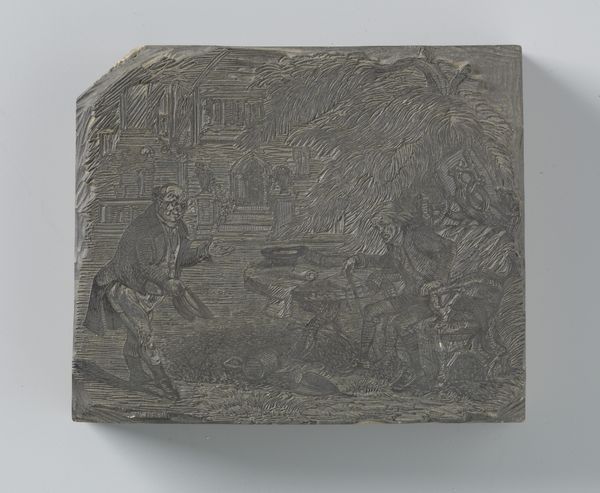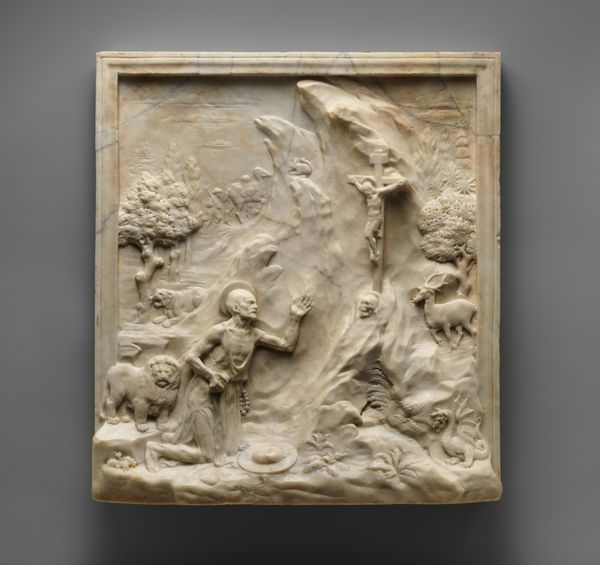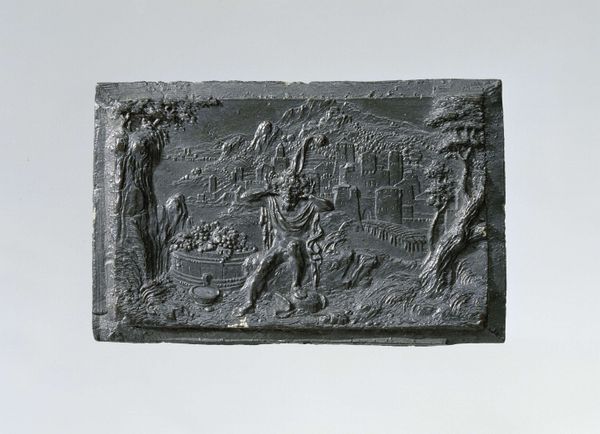
relief, bronze, impasto, sculpture
#
portrait
#
impressionism
#
sculpture
#
relief
#
bronze
#
figuration
#
impasto
#
sculpture
Dimensions: overall without base: 49.5 x 48.8 x 6.7 cm (19 1/2 x 19 3/16 x 2 5/8 in.)
Copyright: National Gallery of Art: CC0 1.0
Edgar Degas made "Picking Apples" from wax, sometime around 1880. Look closely, and you can see just how tactile it is. The figures are roughly modeled, almost as if Degas was thinking through the scene in three dimensions, rather than aiming for a finished sculpture. Wax was often used this way, as a preliminary material. But here, the rough modeling is the whole point. There’s none of the smooth finish associated with bronze or marble. Instead, we get a raw, immediate sense of the artist’s hand. Degas was deeply engaged with the world of labor, especially ballet dancers, but also the everyday toil of ordinary people. The subject matter, a family picking apples, might seem pastoral and charming. But the rugged, almost brutal way that Degas has modeled the wax gives the scene an earthy, unsentimental quality. It reminds us that even the simplest acts of gathering food involve real work. By leaving the wax exposed, Degas challenged the traditional hierarchy of materials, inviting us to reconsider what we value in art.
Comments
No comments
Be the first to comment and join the conversation on the ultimate creative platform.













